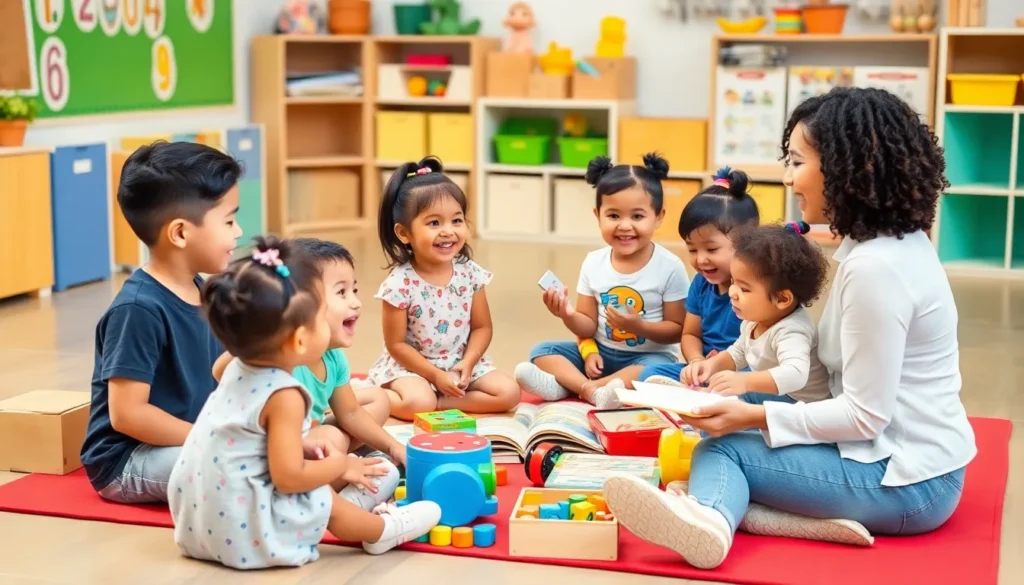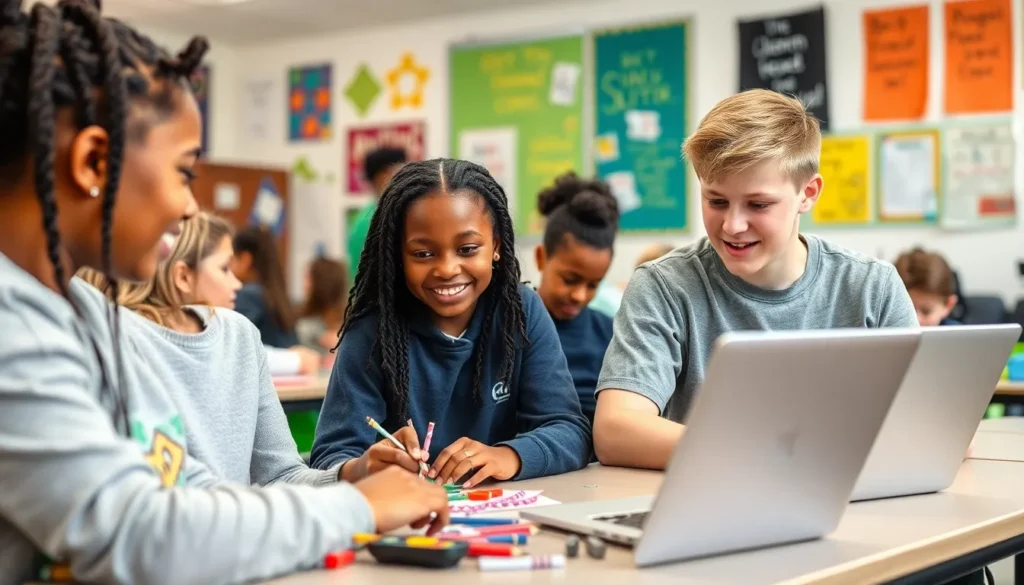Table of Contents
ToggleIn a world where toddlers can navigate smartphones better than their parents, the importance of early learning can’t be overstated. Enter the Early Learning Tree—a magical place where curiosity blooms and little minds grow faster than a weed in a garden. This innovative approach to education isn’t just about ABCs and 123s; it’s about nurturing creativity and critical thinking while keeping the fun factor high.
Imagine a space where kids can explore, experiment, and engage with the world around them. The Early Learning Tree offers a unique blend of structured learning and playful discovery, making education feel like playtime. So why settle for ordinary when you can cultivate extraordinary? Dive into the world of early learning and watch as your child branches out into a bright future filled with endless possibilities.
Overview of Early Learning Tree
Early Learning Tree stands as a progressive educational framework designed for young children. This program prioritizes holistic development through interactive and engaging methods. Children not only engage in structured lessons but also explore their surroundings through play. Creativity and critical thinking serve as cornerstones of the curriculum, making learning both effective and enjoyable.
The program encompasses various activities tailored to different age groups, ensuring a well-rounded educational experience. These activities include hands-on projects, group discussions, and artistic expressions, which stimulate cognitive growth and social interaction. Educators focus on creating a supportive environment in which every child feels valued and encouraged to express themselves.
Assessment methods within Early Learning Tree emphasize observation over traditional testing. This approach allows educators to gauge a child’s development more accurately and adapt lessons accordingly. Collaborating with parents also remains a key component, ensuring families are engaged in their child’s learning journey.
Through experiential learning, children develop essential skills needed for future academic success. Critical life skills, such as communication and problem-solving, emerge as part of everyday activities. Ultimately, Early Learning Tree exemplifies an innovative approach to early childhood education that shapes confident, curious, and capable learners.
Key Features of Early Learning Tree

The Early Learning Tree provides a comprehensive framework that fosters holistic development. This program integrates diverse approaches to stimulate learning.
Curriculum and Content
The curriculum in the Early Learning Tree incorporates hands-on projects, group discussions, and creative activities tailored to specific age groups. Structured yet flexible, it adapts to children’s needs and curiosity. Children engage in experiential learning, which enhances their cognitive abilities. Themes include science, art, and social studies, making exploration fun and relevant. These elements work together, promoting critical thinking and creativity.
User Interface and Experience
The user interface of the Early Learning Tree focuses on simplicity and engagement. Colorful visuals and intuitive navigation enhance user experience. Children find it easy to access activities, ensuring full participation. Feedback and progress tracking occur in real-time, allowing educators and parents to monitor growth actively. The design caters to various learning styles, making it inclusive. Each feature contributes to creating an interactive learning environment that captivates young minds.
Benefits of Early Learning Tree
The Early Learning Tree offers multiple advantages that significantly impact children’s growth and development. Programs like this foster essential skills and promote a love for learning.
For Children
Children benefit immensely from the Early Learning Tree approach. This program emphasizes hands-on experiences that stimulate curiosity and creativity. Engaging in various activities helps them develop critical thinking and problem-solving skills. As they explore diverse themes, children form connections between concepts in science, art, and social studies. This exploration supports social interaction, allowing young learners to collaborate with peers. Nurturing their abilities in a supportive environment builds self-confidence and encourages self-expression, setting a strong foundation for their future education.
For Parents and Educators
Parents and educators gain substantial support from the Early Learning Tree framework. This program actively involves parents in their child’s educational journey, encouraging collaboration and communication. Educators benefit from tailored teaching strategies based on continuous observation and feedback. This approach fosters adaptability in lesson planning, ensuring it meets the unique needs of each child. The program’s user-friendly interface simplifies access to resources, aiding educators in tracking progress efficiently. By participating in this enriching experience, parents and educators contribute to creating confident and capable learners.
Potential Drawbacks
Despite its innovative approach, the Early Learning Tree presents certain drawbacks that merit consideration. Limitations exist in the depth of content available to young learners.
Limitations in Content
Content offerings may not cover all key subjects comprehensively. Certain themes could receive less emphasis than others, which limits the breadth of knowledge children gain. Although the program includes diverse topics, educators might struggle to address specific interests or advanced concepts. Resource availability can also affect depth, leaving some activities feeling repetitive. Children might find themselves engaging in similar tasks without sufficient variety, impacting their learning experience.
Accessibility Issues
Accessibility poses another challenge for some users. Technological requirements can hinder participation, particularly for families without reliable internet access. Additionally, the platform’s age sensitivity might not suit all children, leading to frustration. Parents may feel overwhelmed navigating the platform, which detracts from the collaborative learning experience. If devices are not user-friendly, young learners may struggle with the interface, impacting their interaction with content.
The Early Learning Tree stands out as a progressive approach to early childhood education. By blending structured learning with playful exploration it nurtures creativity and critical thinking in young learners. This innovative program encourages children to engage with their environment while fostering essential skills that lay the foundation for future success.
While it offers numerous benefits such as enhanced cognitive growth and social interaction, challenges remain that require attention. Addressing accessibility issues and ensuring content depth will be crucial in maximizing its effectiveness. Overall the Early Learning Tree represents a promising step towards enriching early education, making learning an enjoyable and collaborative experience for children, parents, and educators alike.




